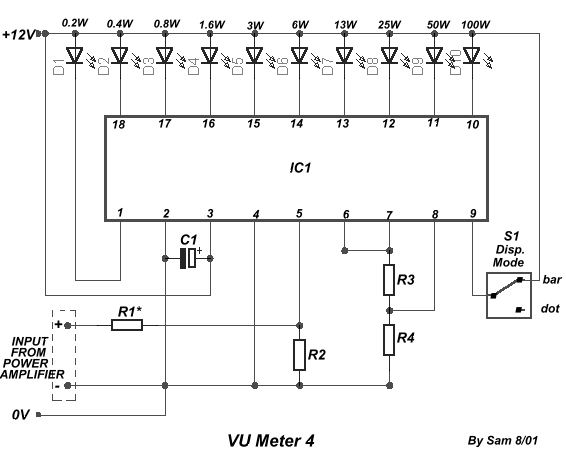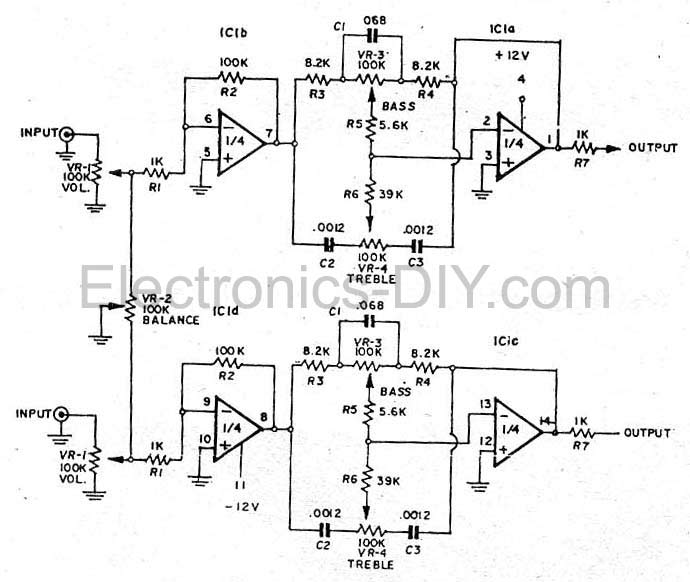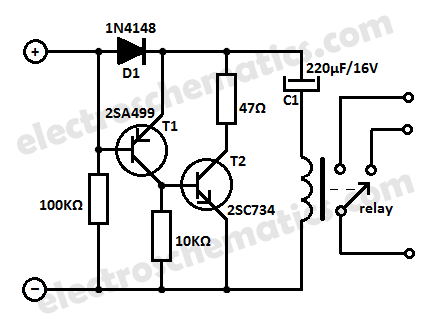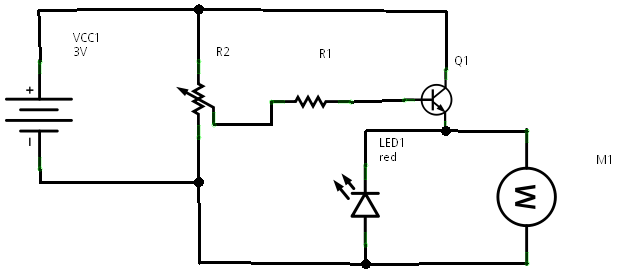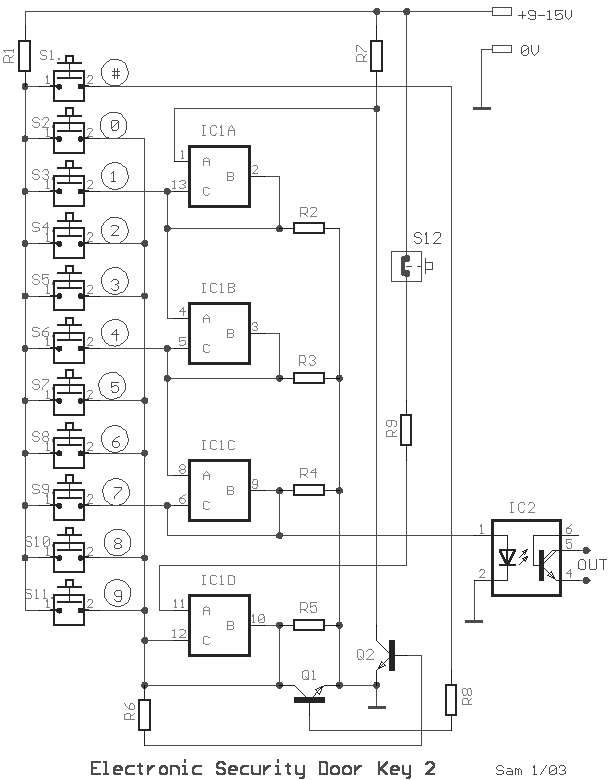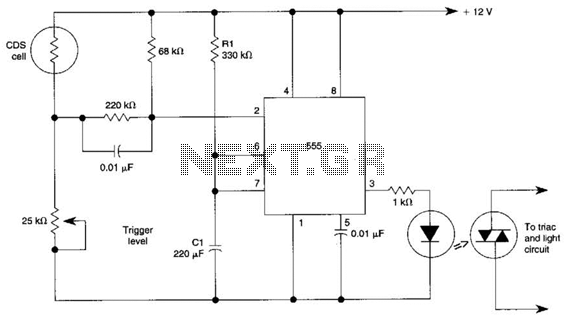
vu meter circuit
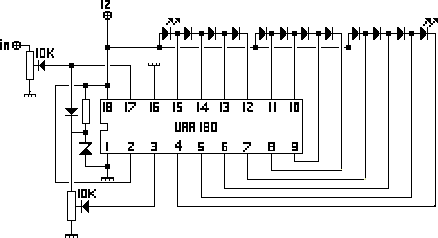
The NL3ASD schematic pages provide the schematics for a LED VU meter utilizing the UAA180 integrated circuit.
The NL3ASD schematic pages feature a comprehensive design for a LED VU meter that employs the UAA180 IC, known for its audio signal processing capabilities. The UAA180 is specifically designed to drive LED indicators based on the amplitude of audio signals, making it suitable for visualizing audio levels in various applications.
The schematic typically includes a power supply section, which may consist of a voltage regulator to ensure stable operation of the UAA180. The input section connects to an audio source, where the audio signal is fed into the UAA180 for processing. The IC's internal circuitry analyzes the incoming audio signal and generates control signals for the LED drivers.
The output section of the circuit is designed to drive multiple LEDs arranged in a bar graph format or a single LED that varies in brightness according to the audio level. The schematic may also incorporate resistors to limit current to the LEDs, ensuring they operate within safe parameters. Capacitors may be included for filtering to smooth out any noise in the power supply or audio signal.
Overall, the design emphasizes clarity and functionality, allowing for easy interpretation and implementation in various audio applications, such as mixers, amplifiers, or standalone audio level indicators. The schematic serves as a valuable resource for engineers and hobbyists interested in constructing their own LED VU meters.The NL3ASD Schematic Pages - Here Can You Find The Schematics Of A Schematic Of A LED VU Meter With The UAA180.. 🔗 External reference
The NL3ASD schematic pages feature a comprehensive design for a LED VU meter that employs the UAA180 IC, known for its audio signal processing capabilities. The UAA180 is specifically designed to drive LED indicators based on the amplitude of audio signals, making it suitable for visualizing audio levels in various applications.
The schematic typically includes a power supply section, which may consist of a voltage regulator to ensure stable operation of the UAA180. The input section connects to an audio source, where the audio signal is fed into the UAA180 for processing. The IC's internal circuitry analyzes the incoming audio signal and generates control signals for the LED drivers.
The output section of the circuit is designed to drive multiple LEDs arranged in a bar graph format or a single LED that varies in brightness according to the audio level. The schematic may also incorporate resistors to limit current to the LEDs, ensuring they operate within safe parameters. Capacitors may be included for filtering to smooth out any noise in the power supply or audio signal.
Overall, the design emphasizes clarity and functionality, allowing for easy interpretation and implementation in various audio applications, such as mixers, amplifiers, or standalone audio level indicators. The schematic serves as a valuable resource for engineers and hobbyists interested in constructing their own LED VU meters.The NL3ASD Schematic Pages - Here Can You Find The Schematics Of A Schematic Of A LED VU Meter With The UAA180.. 🔗 External reference
